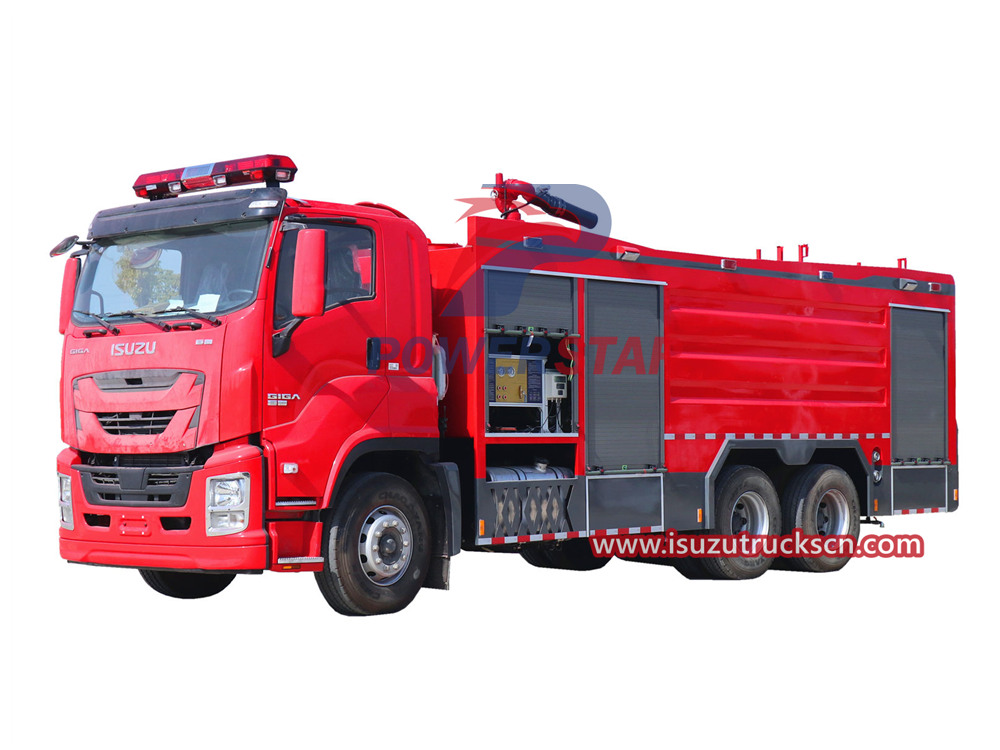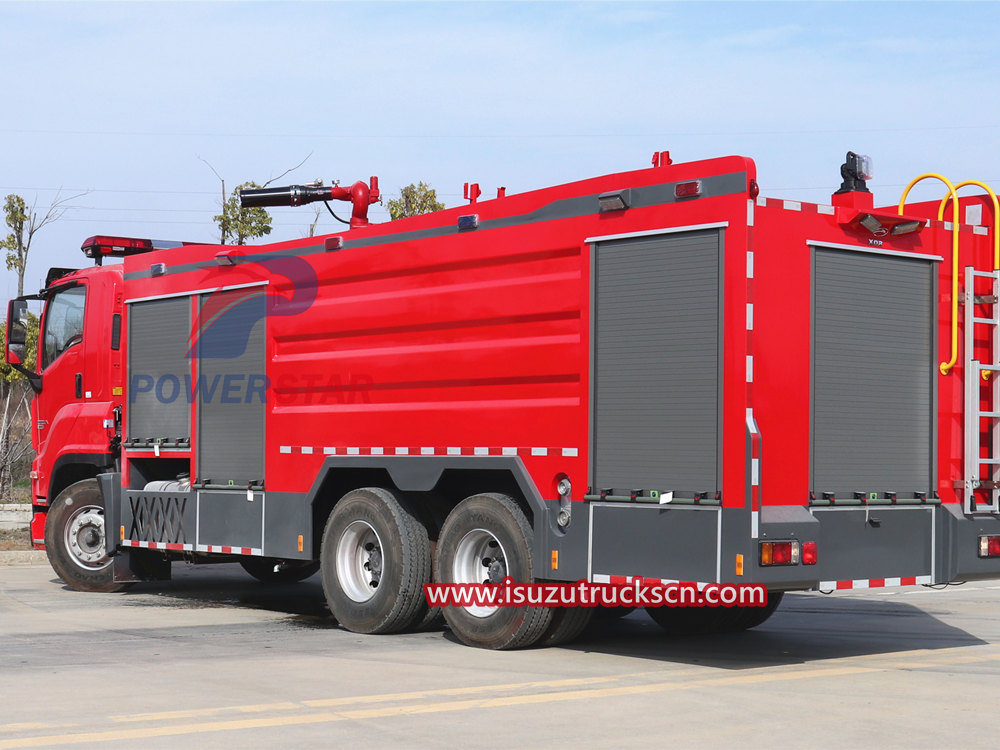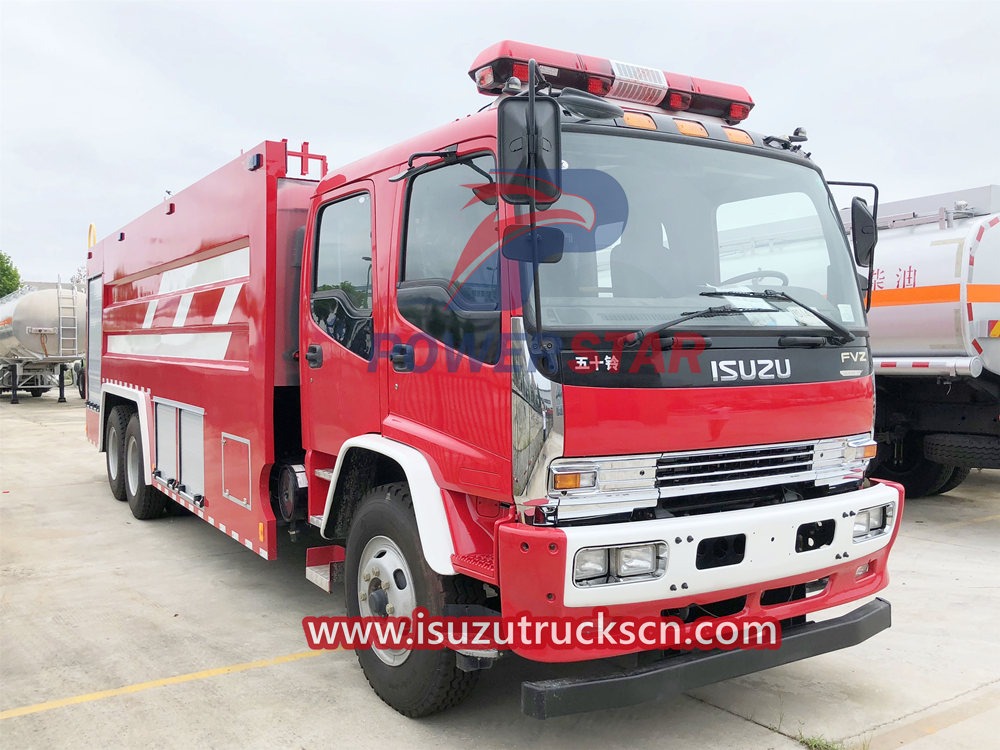


The safety performance testing of Isuzu fire trucks is an important part of ensuring their reliability and safety in fire and rescue missions. These tests can verify the performance of the fire truck under various extreme conditions, thereby ensuring that it can perform optimally in emergency situations. By conducting safety performance testing of fire trucks, the reliability and safety of fire trucks can be improved, better equipment and guarantees can be provided for firefighters, and people's lives and property can be protected. These tests are necessary measures to ensure that fire trucks can effectively respond to various disasters and emergencies, and are of great significance and value.
1. Reliability driving test:
The fire truck should be fully loaded during the 5,000-km reliability driving test, and driving on uneven, bad and mountainous roads should be conducted at a vehicle testing ground approved by the national automotive authority. The average driving speed on highways is not less than 80 km/h, the average driving speed on paved roads is not less than 50 km/h, the average driving speed on uneven and bad roads is not less than 30 km/h, and the average driving speed on mountain roads is not less than 20 km/h. Various road surfaces should be subject to night driving tests with a mileage of not less than 20% of the road mileage. Warning lights and strobe lights should be turned on during tests at the automobile proving ground. Reliability driving test mileage does not include running-in mileage and other test mileage. During the test, if there are situations such as endangering safety, affecting main performance, irrepairable faults at the test site, or frequent fire-fighting facility failures (more than 2 failures per 1,000 km), the test should be terminated, the cause of the failure should be found and corrected, and the test should be repeated. The reliability driving test should record the test mileage of each road surface, the daytime and nighttime test times of each road surface, and the fault conditions and troubleshooting methods during the test.

2. Dynamic performance:
The fire truck's maximum speed and 0 km/h ~ 60 km/h acceleration time tests should be conducted at a vehicle testing site approved by the national automotive authority. The road, weather conditions and test vehicle preparation for the test should comply with the requirements of GB/T 12534. During the test, the fire truck should be fully loaded and the fuel tank should be filled with fuel. Except for the driver and tester, other occupants should be loaded with heavy objects at a rate of 75 kg/person. The maximum speed test should use a speed measuring instrument. Before the test, check whether the tire pressure, braking system and steering system of the fire truck are normal. During the test, the windows should be closed and the warning lights and sirens should be turned on. The maximum vehicle speed should be maintained for 5 seconds. The test should be conducted once for each round trip and once for return. The average value of the round trip and round trip tests should be taken as the maximum vehicle speed. The starting shift acceleration time test.

3. Security protection performance test:
Visually check whether there are sharp protrusions and sharp edges on the outer surface of the fire truck, whether there are items or heat sources around the fire-fighting device operating area that may cause harm to the operator, whether protective devices are installed on hot surfaces exceeding 60°C and high-speed rotating objects, and whether the fire-fighting device operating area is larger than Whether the 65 mm water hose interface and pipelines with pressure greater than 1.8 MPa are kept away from operators or protective measures are taken. Check the production qualification of pressure vessels. The installation parts of pressure vessels in contact with hard objects should be lined with soft, corrosion-resistant and shock-absorbing linings. object, check and determine whether the test results comply with the regulations.

4. Rainproof sealing test:
The rainproof sealing test is conducted using artificial rainfall. The width of the rainproof sealing frame is 3 m, and the length should be greater than the length of the fire truck under test. Water supply pipes are installed on both sides of the rainproof sealing frame, and rainwater nozzles are installed on the water supply pipes at intervals of 250 mm the upper water supply pipe can move up and down, the nozzle faces the fire truck in a 45º direction, the lower water supply pipe is fixed, and rainwater nozzles facing the fire truck are installed at a distance of 250 mm on both sides. During the test, drive the fire truck into the rain-proof sealing frame, adjust the water supply pipe above the rain-proof sealing frame so that the rain nozzle is 300 mm above the two sides of the fire truck, close the fire truck door, window and equipment box door, start the engine and maintain idle speed, and turn on the water supply. The water pump supplies water to the rainproof sealing frame at a rainfall intensity of 0.12 mm/s, and the wiper, warning lights, and strobe lights are turned on at the same time. The test time is 15 minutes. After stopping spraying water, open the fire truck doors, windows and equipment box doors to check for leaks and determine whether the test results comply with regulations.

5. Low temperature use test:
If the operating temperature of the fire truck stated on the nameplate of the fire truck is -10°C or below, visually check whether the fire pump and exposed valves and other water-passing parts of the fire truck are equipped with insulation or heating devices. If the temperature is -10°C or lower, Get off the fire truck and leave it for 1 hour with no remaining water in the pipeline. Start the insulation or heating device. Check whether the fire monitor and each water outlet are working properly. Visually check the starting position of these insulation or heating devices to determine whether the test results comply with the regulations.




